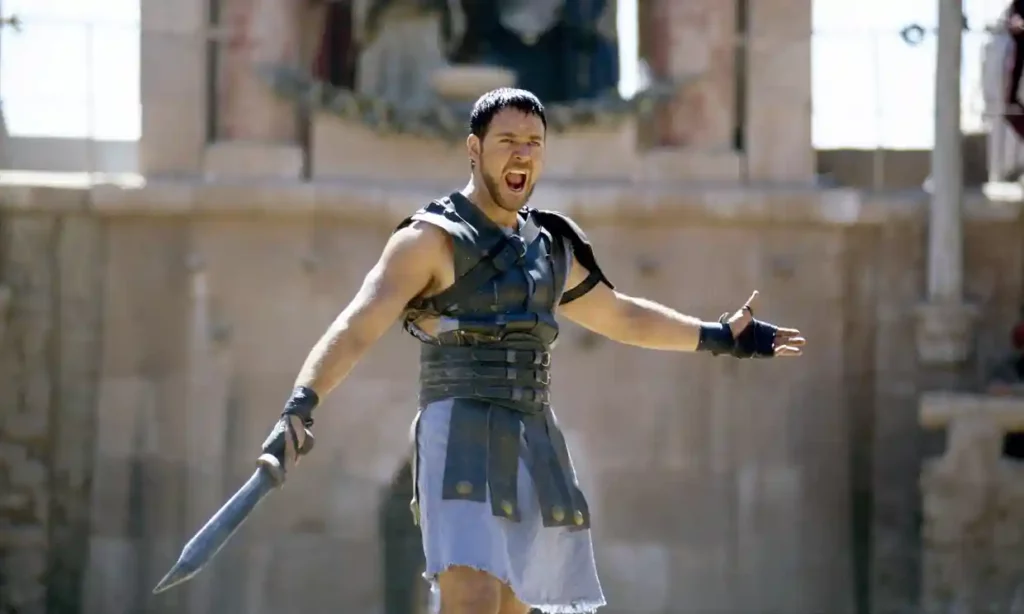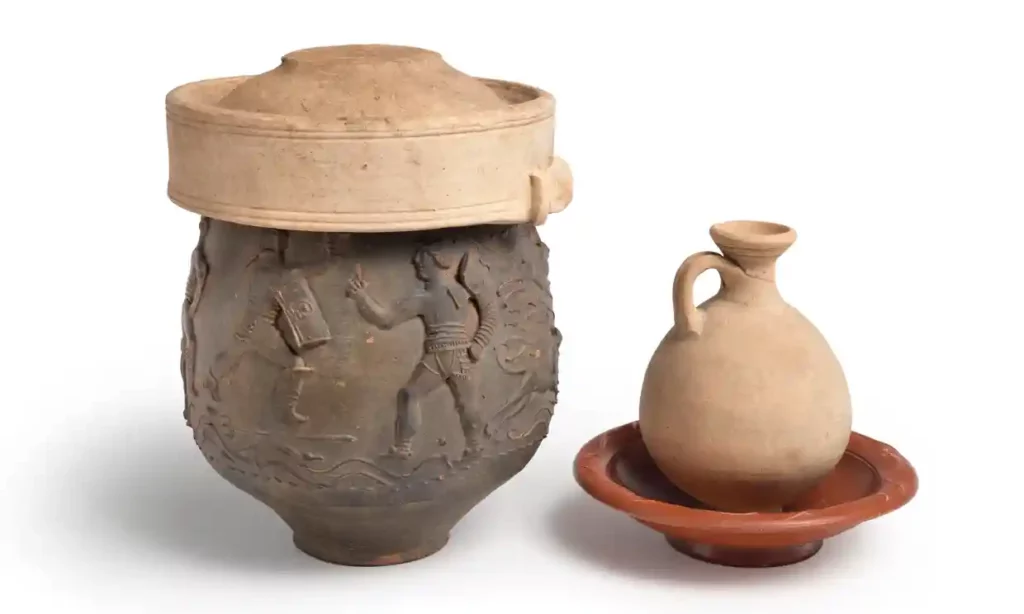‘Startling’ new evidence reveals gladiators fought in Roman Britain

Gladiator fights backed by roaring crowds in impressive-looking arenas have long inspired film-makers behind classics such as Gladiator and Spartacus. Now new research reveals for the first time that such a sporting spectacle took place in Britain in the late second century AD.
Crucial evidence has been discovered within a spectacular vase – decorated with a depiction of gladiatorial combat – which was unearthed from a Roman grave in Colchester in 1853.
New tests prove the Colchester Vase was made of local clay around AD 160-200 and that an inscription bearing the names of two featured gladiators was cut into the clay before firing, rather than afterwards, as previously assumed. It was therefore an intrinsic part of the vessel’s original design rather than a later addition to a generic arena representation.
That means the vase was the ultimate in sports memorabilia, perhaps commissioned by a gladiator trainer or owner, or someone else involved with such contests.
Frank Hargrave, director of Colchester and Ipswich Museums (CIMS), which owns the vase, told the Observer the research has led to “startling new conclusions”, showing its true significance in recording a real spectacle in Colchester, known to the Romans as Camulodunum.
“It’s the only evidence of a Roman arena gladiator combat actually being staged in Britain,” he said. “There are no written descriptions. The vase is such high quality that there’s been a bit of snobbery, an assumption that it couldn’t possibly have come from Britain, whereas all the analysis has now put that to bed.”

Glynn Davis, a Roman archaeologist and CIMS senior curator, described the findings as “incredibly significant”. “There’s nothing else like that from Britain. It’s a commemorative piece, almost a trophy for the trophy cabinet. Later, it’s used as a funerary vessel.
There must be an intimate connection with the deceased. They could well have sponsored the games. Or they were an absolute sports nut. For whatever reason, they saw the fight and thought, ‘I want a memento of that’.”
The research involved a large team, including academics from the universities of Durham, London and Reading. Their osteological and isotopic analysis of the cremated human remains within the vase revealed a “non-local” male of “potentially European origin”, aged over 40.
The vase – 212mm x 158mm – reflects that gladiatorial combat was part of Roman arena spectacles, where programmes included exotic animals. Its decoration features two men baiting a bear and a dog chasing a hare and deer.
Gladiators were typically paired with different combinations of armaments, and the vase shows a “secutor”, whose full armour included a heavy shield and helmet, and a “retiarius” who, with little more than a shoulder-guard, could move quickly, inflicting a blow with his trident or ensnaring his opponent with his net. Although the secutor was well-armoured, he was weighed down and his vision was restricted.
The gladiators were slaves, and those on the vase are identified as Memnon and Valentinus, thought to be stage names.
John Pearce, senior lecturer in archaeology at King’s College London, argued that – as such names were sometimes based on Homeric heroes – that of Memnon may have been inspired by the mythical bellicose king of the Ethiopians, whose martial reputation was second only to Achilles, who later slew him at Troy. “Memnon appears quite often in Roman literature. He’s described as this massively impressive ‘black-skinned’ person, this hero who comes from Troy. I’m wondering why Memnon would be chosen as the name of the gladiator. Is that because we’ve got a black gladiator who is from somewhere well south of Colchester – from north Africa?”
The vase shows the moment after Memnon overcomes his opponent, who is holding up his forefinger in a sign of submission by gladiators.
In their forthcoming research paper, Davis and Pearce write: “The ad digitum gesture by Valentinus signals the end of combat, but the decision to spare or slaughter him, and thus his fate as victim or survivor … is unreported.”
Davis said: “You’re looking at this moment in time. Is Valentinus spared? That would be down to the owner of the gladiators and sponsor of the games, as they are slaves.”
While gladiators were seen as social outcasts, they were also celebrities. Their gruelling training was an expensive investment, and owners were reluctant to see them slaughtered.
Most contests were not fights to the death, Davis said. Although he praised their portrayal in classic films such as Spartacus and Gladiator, he added: “There’s a lot of misconception about gladiators in the ancient world. It was big business and they were a commodity. Although thousands of people died in arenas in the Roman world, they were generally criminals and prisoners of war. Gladiators did die, but not in this bloodbath of popular culture.”
Although no amphitheatre – the usual arena for gladiatorial combat – has yet been discovered, Colchester has two Roman theatres where such an event could have been staged. Pearce said: “With our re-analysis of the Colchester Vase, we can be confident that this was an event that took place here.”
The vase will be displayed in a major exhibition on gladiators at Colchester Castle from 15 July. Roman oil lamps, including one shaped as a gladiator’s helmet, will be among the exhibits.
